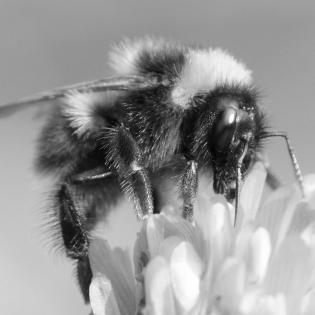Beneficial Bees - High School
Students explore the roles of bees in a hive and as pollinators. They learn about reasons their population numbers have been declining in recent years. They design a project to help beautify their school and help the larger environment by attracting bees. They may write a letter or create a handout to teach others how to help bees through planting native species.
Students will be able to
- identify the different types of bees in a hive and their subsequent parts.
- place bees in an economic and environmental construct.
- work together in order to beautify their school and help the larger environment by attracting more bees to their area.
- copy of the PowerPoint presentation below
- student copies of the Roles Sheet below
- seeds, plants, soil, and gardening tools
- Environmental Protection Agency (2016). Colony Collapse Disorder. Retrieved from https://www.epa.gov/pollinator-protection/colony-collapse-disorder
- TED Talk (2013). Why are bees disappearing? Retrieved from https://www.ted.com/talks/marla_spivak_why_bees_are_disappearing?utm_content=awesm-publisher&utm_medium=on.ted.com-static&awesm=on.ted.com_MarlaSpivak&utm_campaign=&utm_source=pinterest.com
- University of Illinois Extension (2017). Facts of the Case: Flower Parts. Retrieved from https://web.extension.illinois.edu/gpe/case4/c4facts1a.html
- YouTube (2014). Why Do We Need Bees? Retrieved from https://www.youtube.com/watch?v=6CxCTyxRFh0
Instructions
Anticipatory Set: Glean what the students already know about bees. This can be accomplished through the following options:
- Graffiti Board: Have students write on the board what they know when you pose the question, “What do you know about bees?”
- Survey: Submit ½ sheets of paper to the students and have them write what they know. Have them pass sheets to the front and read what they wrote. Write on the board what they know.
- Standard discussion posing what students know about bees and their importance.
Give a lecture over the provided PowerPoint to instill in students the basic knowledge of bees: their body parts and roles in the bee community. Have students fill in details on the provided Bee Notes worksheet.
- Discuss what we can learn from how bees work together for a common goal.
- Ask students to write about the value of bees and how attracting bees to the area improves the world.
Give each small group a link to a resource about why bees are not thriving. Give them 15 minutes to read and discuss the main point from their source and prepare to tell the class what they learned.
Give each group a few minutes to share what they learned.
Students plan a project in which they plant specific flowers and shrubs to attract bees to the school grounds. Use and alter the provided sheet, based upon circumstances.
They may use their voice to share what they learned about the value of bees to the environment. Discuss methods for spreading the word and what words will be convincing.
Students will receive a grade for their completion of the note sheet. The note sheet could also serve as an assessment grade. Students will also receive a grade for their full involvement and successful completion of the planting project.
Philanthropy Framework
-
Strand PHIL.II Philanthropy and Civil Society
-
Standard PCS 01. Self, citizenship, and society
-
Benchmark HS.3 Give examples of human interdependence and explain why group formation is one strategy for survival.
-
-
Standard PCS 07. Skills of Civic Engagement
-
Benchmark HS.1 Utilize the persuasive power of written or oral communication as an instrument of change in the community, nation or the world.
-
-
-
Strand PHIL.IV Volunteering and Service
-
Standard VS 01. Needs Assessment
-
Benchmark HS.1 Identify a need in the school, local community, state, nation, or world.
-
-
